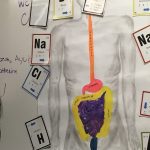A campaign to End Plastic pollution is the theme of the 2018 Earth Day Celebrations.
Learn more about health problems posed by plastic pollution.
“PLASTICS AND YOUR OWN HEALTH
After decades of producing trillions of oil-based plastic items, the negative consequences are star- tling. Plastic pollution is now recognized as a hazard to public health and the human body. Chemicals leached from some plastics used in food/beverage storage are harmful to human health. Correlations have been shown between levels of some of these chemicals, and an increased risk of problems such as chromosomal and reproductive system abnormalities, impaired brain and neurological functions, cancer, cardiovascular system damage, adult-onset diabetes, early puberty, obesity and resistance to chemotherapy.
Many plastics contain phthalates (DEHP) and the chemical BPA. If food or drink is stored in these plastics, they can be contaminated with these chemicals. If food is heated inside these containers in the microwave or if the plastic is ingested as in the case of a small child, these chemicals make their way into our food and into our bodies. Both chemicals are potentially harmful to human hormones, reproductive systems, and early childhood development.”






